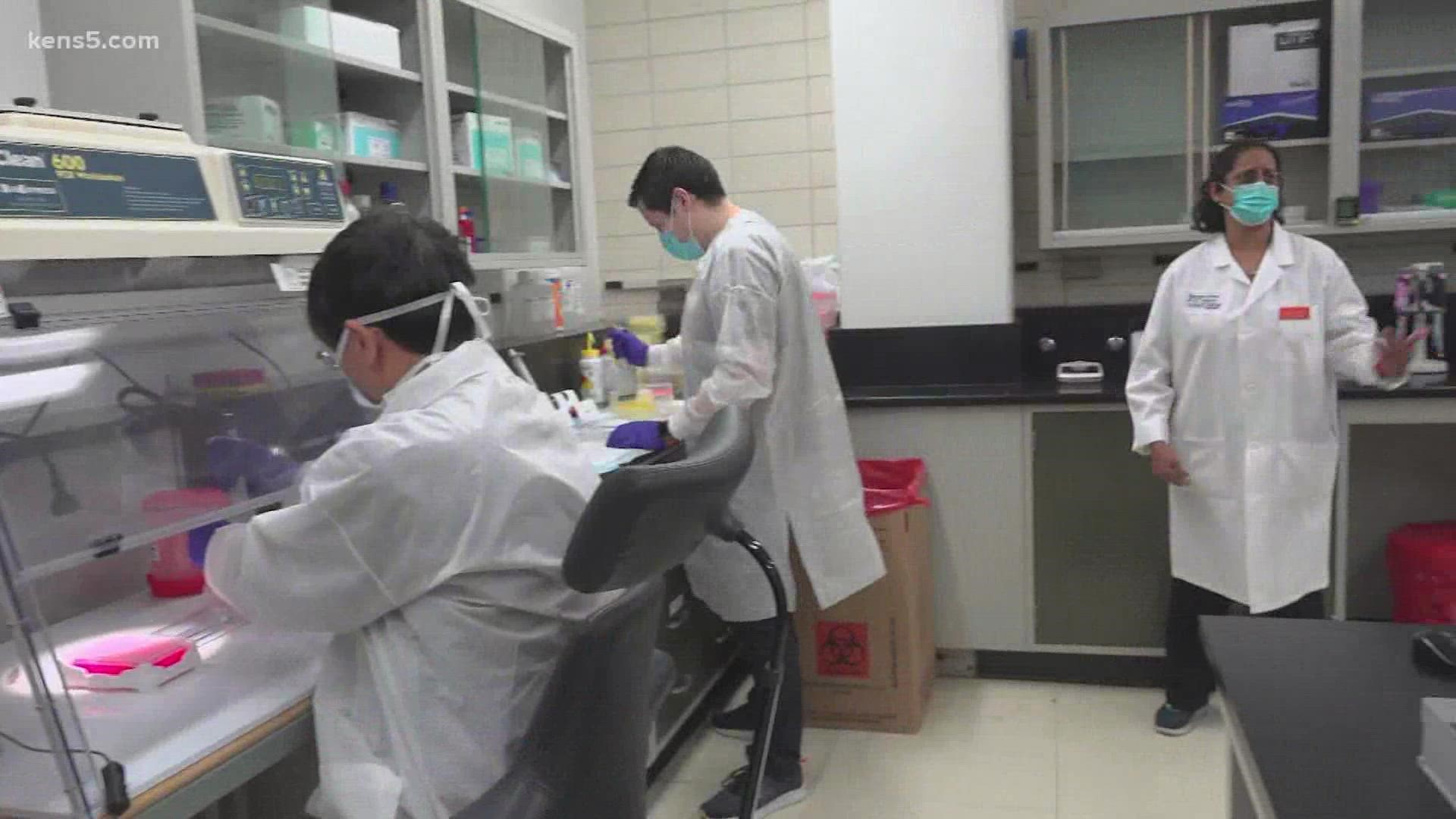SAN ANTONIO — Since the coronavirus pandemic began almost two years ago there have been over a dozen strains of the virus. Here at UT Health San Antonio they have a lab which differentiates between each of the strains in an effort to save lives.
UT Health San Antonio uses a technology called next-generation sequencing to differentiate the genetic makeup of thousands of genes at a time from many different samples. Doing this goes a long way in the fight against COVID-19.
"It's very exciting that we're doing the testing right here in San Antonio," said Dr. Marjorie David who is the Director of the Molecular Diagnostics Laboratory at UT Health San Antonio.
Her lab sequences COVID-19 virus samples in partnership with UT Health San Antonio’s Greehey Children’s Cancer Research Institute, Genome Sequencing Facility, and GCCRI’s bioinformatics team. They test and sequence samples from UT Health San Antonio’s operations as well as from University Health and nonprofit Community Labs. The work is funded by the San Antonio Metropolitan Health District and the Texas Department of State Health Services.
"There's a collaborative project that we're a part of that just recently began with DSHS working with multiple different institutions in Texas that are determining SARS-COV2 sequencing," Dr. David told us.
Next-generation sequencing is needed to figure out the strain of the virus, to track transmission routes of the virus globally, detect mutations to prevent the spread of new strains, Identify viral mutations that can affect vaccine potency, and target the strain for possible COVID-19 therapeutics.
The sequencing process starts with two monstrous Panther instruments.
"Together, we can test up to 2,000 samples per day," Dr. David said.
For the first few months of the pandemic it had to be done by hand.
"We couldn't do very many at once. We didn't have all these automated instruments approved yet," Dr. David added.
From there the samples move on to this lab where they extract nucleic acid, then check the viral load using a PCR machine.
"Which is similar to the original COVID testing that was first developed in the very beginning of the pandemic," Dr. David told us.
From there they sequence the sample in this machine, the MiSeq instrument, and a computer processes all the data.
"To just show the bioinformatics process, which can take one day, one to two days," Dr. David said.
That is the last step to determine the variant in question. Right here is where the first few cases of omicron were detected in Bexar County.
"We're really excited to have this local sequencing happening throughout Texas because we're personally invested in our population locally and that that really helps us to communicate better with our local health departments as well," Dr. David said.

